With government funding for broadband skewing heavily in favor of fiber, regional fixed wireless providers are increasingly embracing hybrid networks to compete and survive.
This is a major change because most, if not all, of the nearly 3,000 WISPs currently operating in the US alone started out as strictly fixed wireless networks.
Fixed wireless is a great choice for startup WISPs, as it’s easier and cheaper to deploy than fiber or cable, meaning operators can get money flowing and scale up faster. It’s also the quickest and most effective way to reach underserved areas, which has enabled WISPs to get high-speed internet to more than 7 million households to date.

The Rise of Fiber Hybrid Networks
To continue to thrive, however, regional operators should consider adding fiber to their networks soon if they haven’t started already. There are a number of reasons behind this, including:
- Competition—Massive funding for broadband builds post-COVID means it’s only a matter of time before you encounter fiber in your area. If you don’t build it, someone else will. Also, ironically enough, major telcos are ramping up their fixed wireless presence, meaning regional operators will likely need to diversify in order to compete.
- Demand—As competitors begin marketing more aggressively on speed, price, and reliability, customers will start requesting fiber as an option.
- Versatility—In some cases, fiber may simply be the better tool for the job, such as in areas that are more densely populated or in apartment buildings and other MDUs.
To hear directly from regional operators who’ve successfully navigated adding fiber to their networks, check out our webinar on Fixed Wireless, Fiber, and the Future, featuring Jason Pond, CEO of Grizzly Broadband, and Adair Winter, co-owner of AW Broadband. In it, you’ll find great advice on what to do and what to avoid when building your fiber hybrid network.
Both Grizzly and AW Broadband are Preseem customers. As a multi-vendor, multi-access platform, we provide hybrid operators with a single point of plan enforcement across access technologies. Some of the things that our platform provides—latency measurement, queue management, and traffic shaping, for example—are effective across all technologies, leading to improved subscriber QoE and customer satisfaction whether your customers are fixed wireless or fiber.
Read on to learn about some of the other benefits we provide for Access Network Operations and Support teams operating in a fiber hybrid environment.
No Need to Learn Multiple Vendor Tools
Operating a network with both fiber and fixed wireless technologies can often mean Access Network Operations and Support staff have to learn multiple vendor tools.
The training this requires can be time-consuming and can also lead to “knowledge silos,” where only a few people in the organization know how to use a particular system. This can make it difficult to get an accurate picture of overall network health. It can also extend troubleshooting and ticket resolution times, as issues inevitably get escalated to those with specialized knowledge.

With Preseem, however, you get a single platform that gives you a centralized view of subscriber information, metrics, and equipment across all technologies and vendors. This means that there’s no need to train your L1 support on multiple types of equipment, and they’ll also no longer need direct access to OLTs/ONTs.
As well as the reduced risk from having fewer people accessing vendor configuration tools, a common interface allows your teams to answer questions and investigate customer problems without needing to become experts on a variety of vendor systems.
Identify and Resolve Issues Faster
By not needing access to or training on multiple tools, your teams can simplify the support process and get to the root cause of issues sooner. Preseem helps your Support team find bottlenecks that affect the subscriber experience, such as identifying in-home Wi-Fi issues for fiber or fixed wireless customers.
Our QoE-optimized plan enforcement means fiber and fixed wireless subscribers get a great, low-latency experience even when they max out their plan rates, leading to fewer support calls and truck rolls.
In addition, our easy-to-understand metrics enable simple investigation of network and subscriber behavior, giving your Support team the tools they need to resolve issues faster. For example, in a fiber network, your team will be able to:
- Easily identify the specific OLT and PON port to which a subscriber is connected
- Reduce time to root cause by providing key performance indicators (KPIs) such as light levels of the OLT-ONT link
- Enable support staff to troubleshoot network problems more effectively without the need to log into vendor-specific tools

For your Access Network Operations team, meanwhile, some benefits include:
- Quickly identify which PONs are delivering a poor QoE for subscribers
- Gain actionable insights to prioritize troubleshooting efforts and improve overall network performance
- PON Shaping helps provide the best possible QoE when the PON gets congested, even for a short time

Use the Right Tool for the Job
Having a common interface for your fixed wireless and fiber hybrid network gives you a single point of plan enforcement across vendors and access technologies. This reduces integration complexity and makes it much easier to introduce new vendors and models to the network.
It also helps increase your negotiating power with vendors—by being able to easily switch or add new vendors without having to worry about organization-wide retraining costs, you’re now free to choose the best vendor or model for each deployment. As a result, you get pricing leverage with suppliers because you no longer have to be locked into one hardware vendor for your OLTs and other equipment.
As mentioned above, regional providers will likely need to add some fiber to their networks sooner rather than later. Having one platform to monitor subscriber quality of experience and network health across access technologies and vendors should help ease the transition for your staff while keeping your customers happy.
Contact us when you’re ready to see what Preseem can do for your network.





